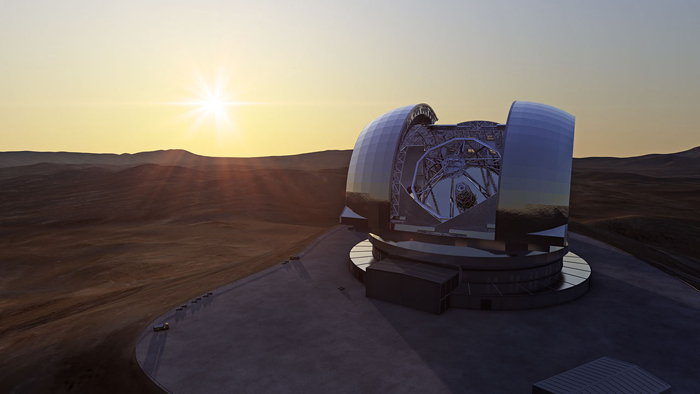Chilean Mountain to Be Blasted for New Telescope

A mountain in northern Chile's remote Atacama Desert is about to get its top blown off to make way for the biggest optical telescope in the world.
A dynamite blast scheduled for this afternoon (June 19) will shave 59 feet (18 meters) from the peak of Cerro Armazones, where construction will begin later this year on the European Extremely Large Telescope, or E-ELT.
You can watch a live webcast of the explosion on Live Science. Coverage will begin at 12:30 p.m. EDT (16:30 UTC).
"I am looking extremely forward to the whole event," said E-ELT scientist Joe Liske. "I've been working on this project since 2006, and I'm extremely pleased that we're really moving some dirt now." [See Photos of the E-ELT Site on Cerro Armazones]
Studies evaluating the performance, cost, schedule and risk for the telescope — a project of the European Southern Observatory (ESO) — began in 2005 and 2006. But construction on the $1.3 billion machine was pushed back from a planned 2012 start date amid the global recession, as most of ESO's 14 member nations contributing to the project were stricken with financial difficulties.
With a mirror 128 feet (39 m) in diameter, the E-ELT will be able to collect 100 million times more light than the human eye and at least 15 times more light than today's most powerful optical telescopes, according to ESO officials. The machine will also produce images 15 times sharper than those obtained by the Hubble Space Telescope, which will help scientists search for cosmic objects ranging from potentially habitable alien planets to dark matter.
Hacking off the top of Cerro Armazones will create a flat surface about twice the size of a football field on which the telescope will be assembled.
Get the world’s most fascinating discoveries delivered straight to your inbox.
"You need that big of a platform to be able to accommodate the actual telescope building itself, but also during the construction period, you need more space to be able to leave all the containers and put all the cranes and so on," Liske explained.
Astronomers flock to the Atacama Desert for its pristine night-sky observing conditions. The region boasts about 320 cloud-free nights a year, little light pollution, low humidity, very stable air and high-altitude peaks.
"We want to have a little less atmosphere between us and the stars," Liske said. Cerro Armazones currently towers at a height of 10,052 feet (3,064 m) — soon to be about 9,993 feet (3,046 m).
The peak was actually considered a possible candidate to house ESO's Very Large Telescope, which now sits nearby on Cerro Paranal. E-ELT's control room will actually be located at Paranal, and once proper roads are built between the two mountains, driving from one observatory to the other will only take about a half hour. Traveling over dirt roads today, the ride takes more than 3 hours, Liske said.
Follow Megan Gannon on Twitter and Google+. Follow us @livescience, Facebook& Google+. Original article on Live Science.




